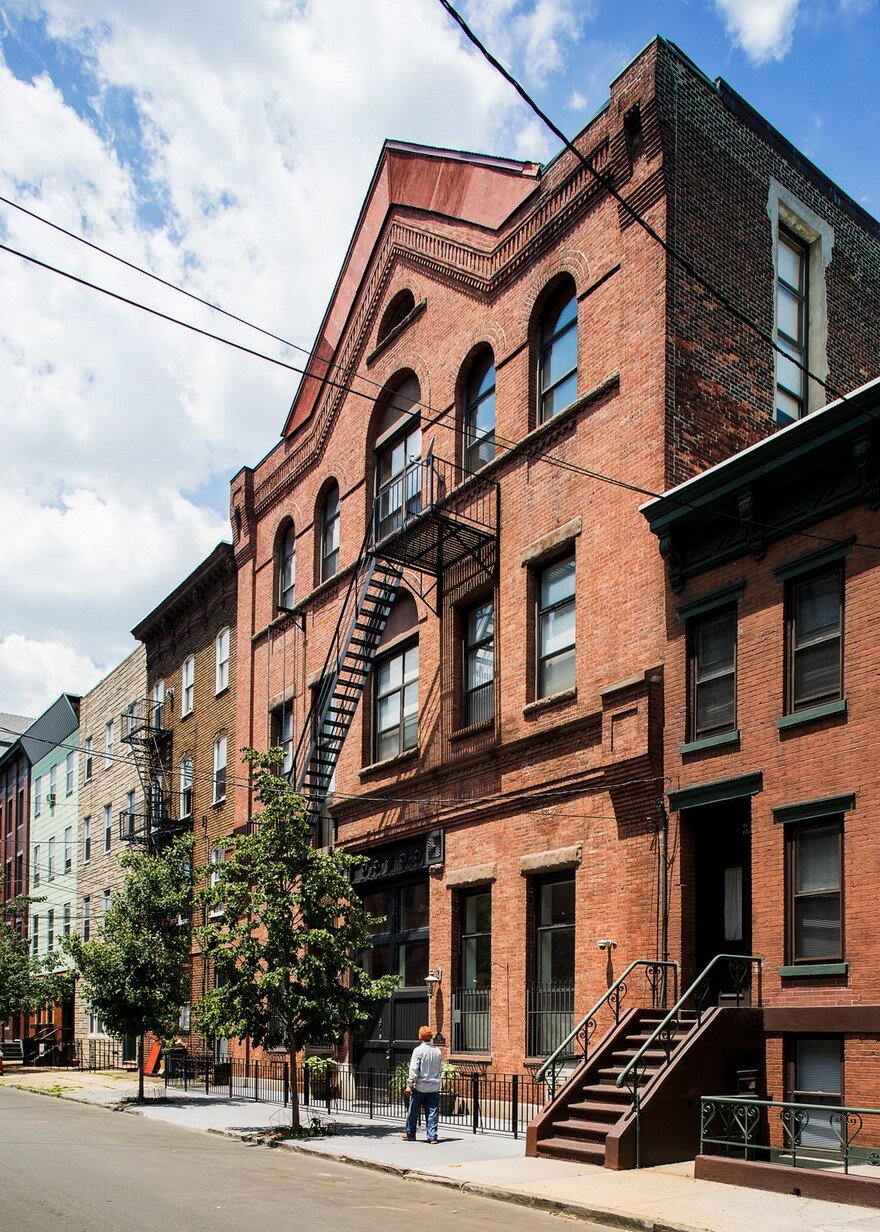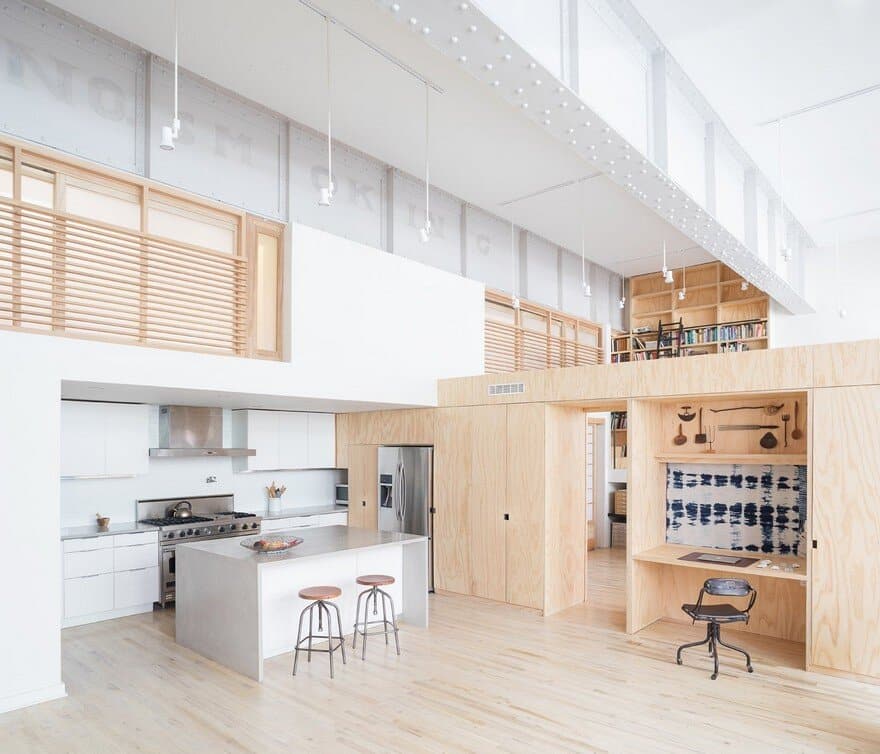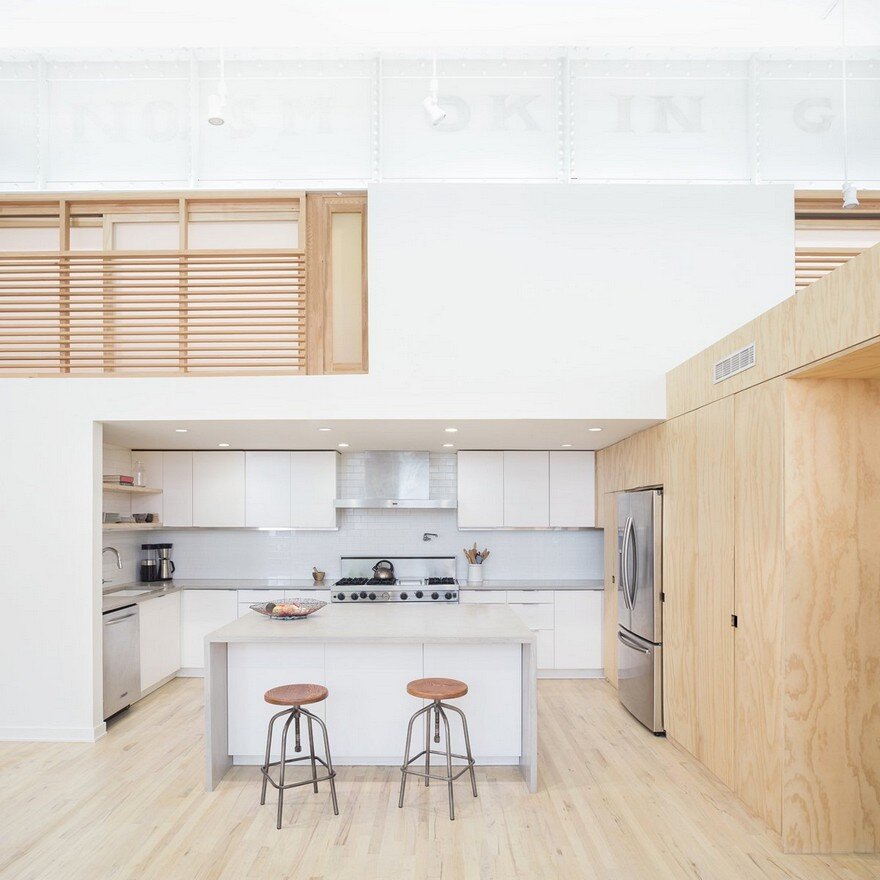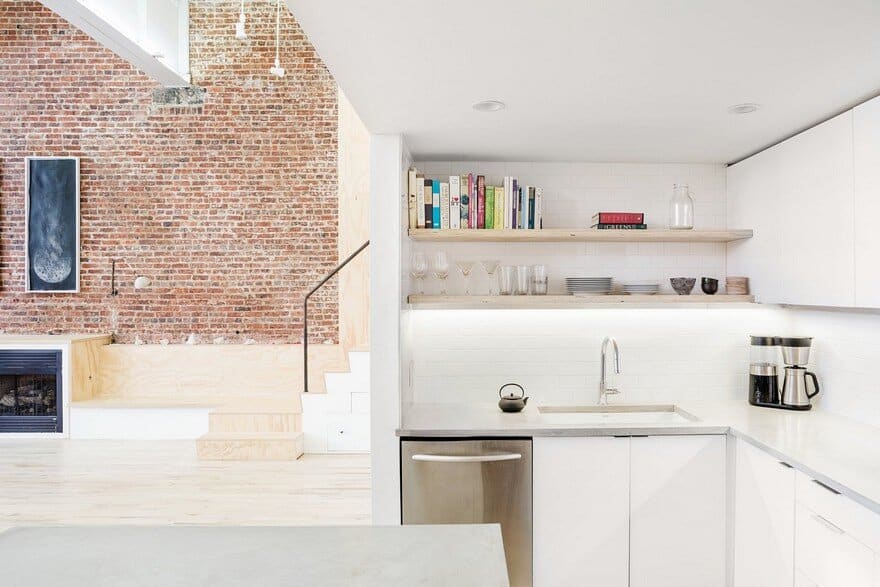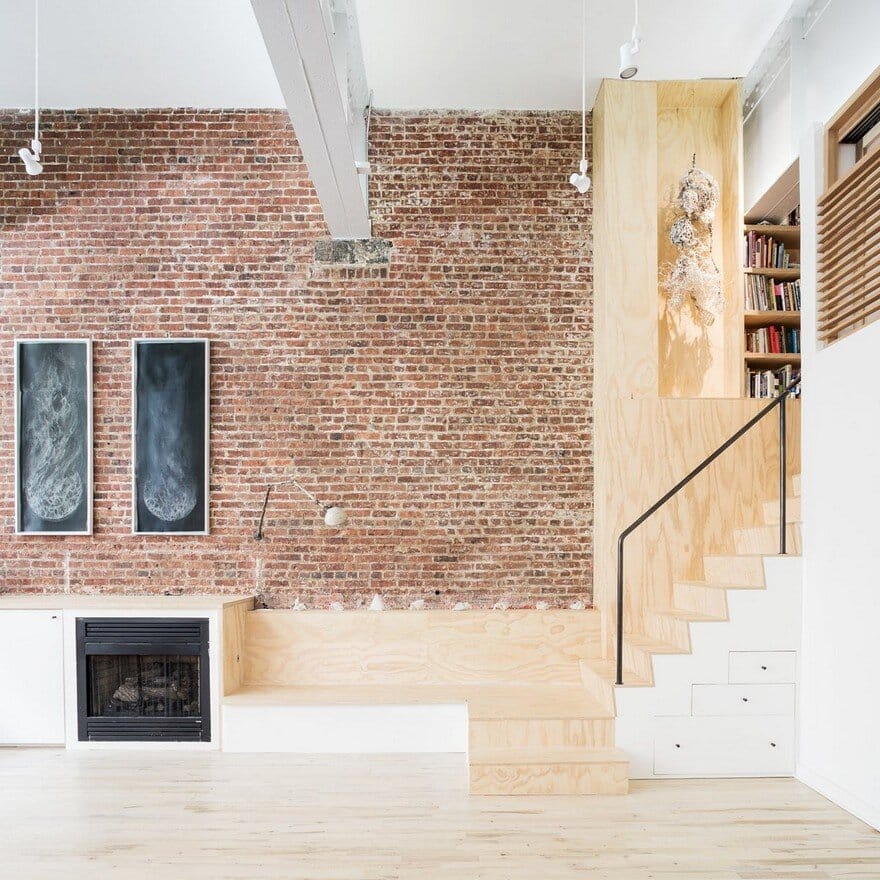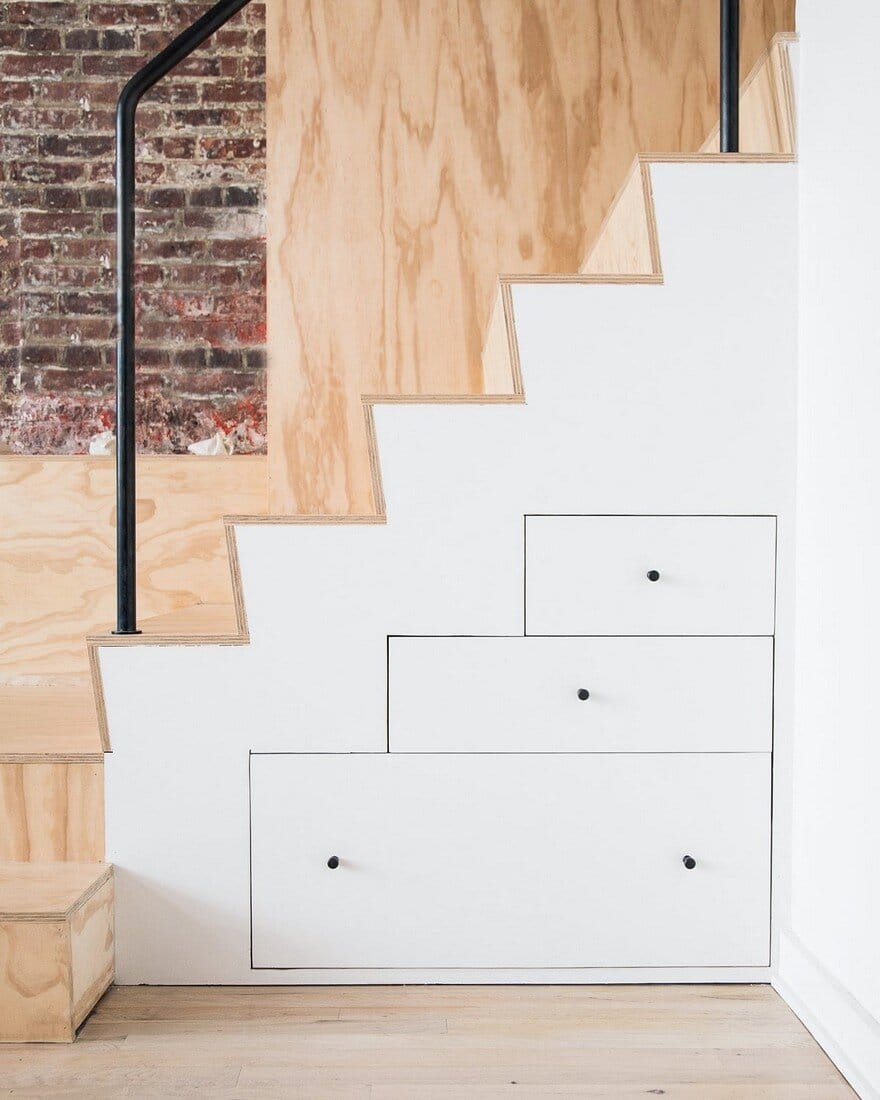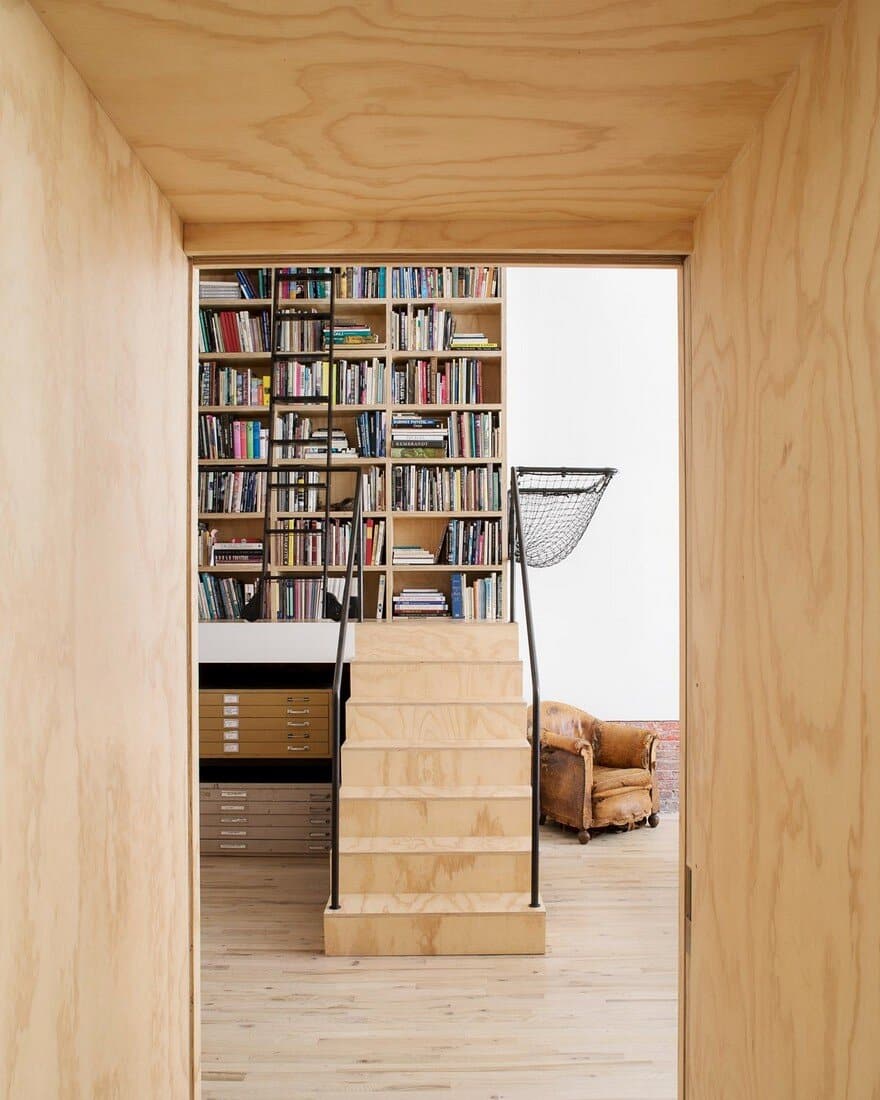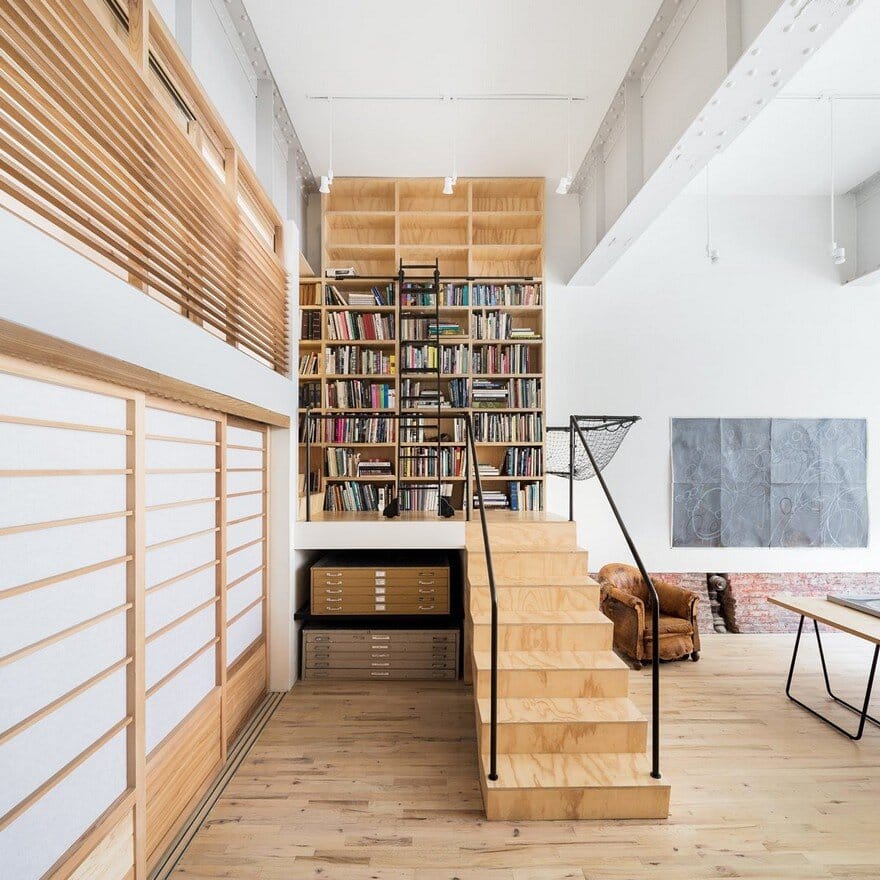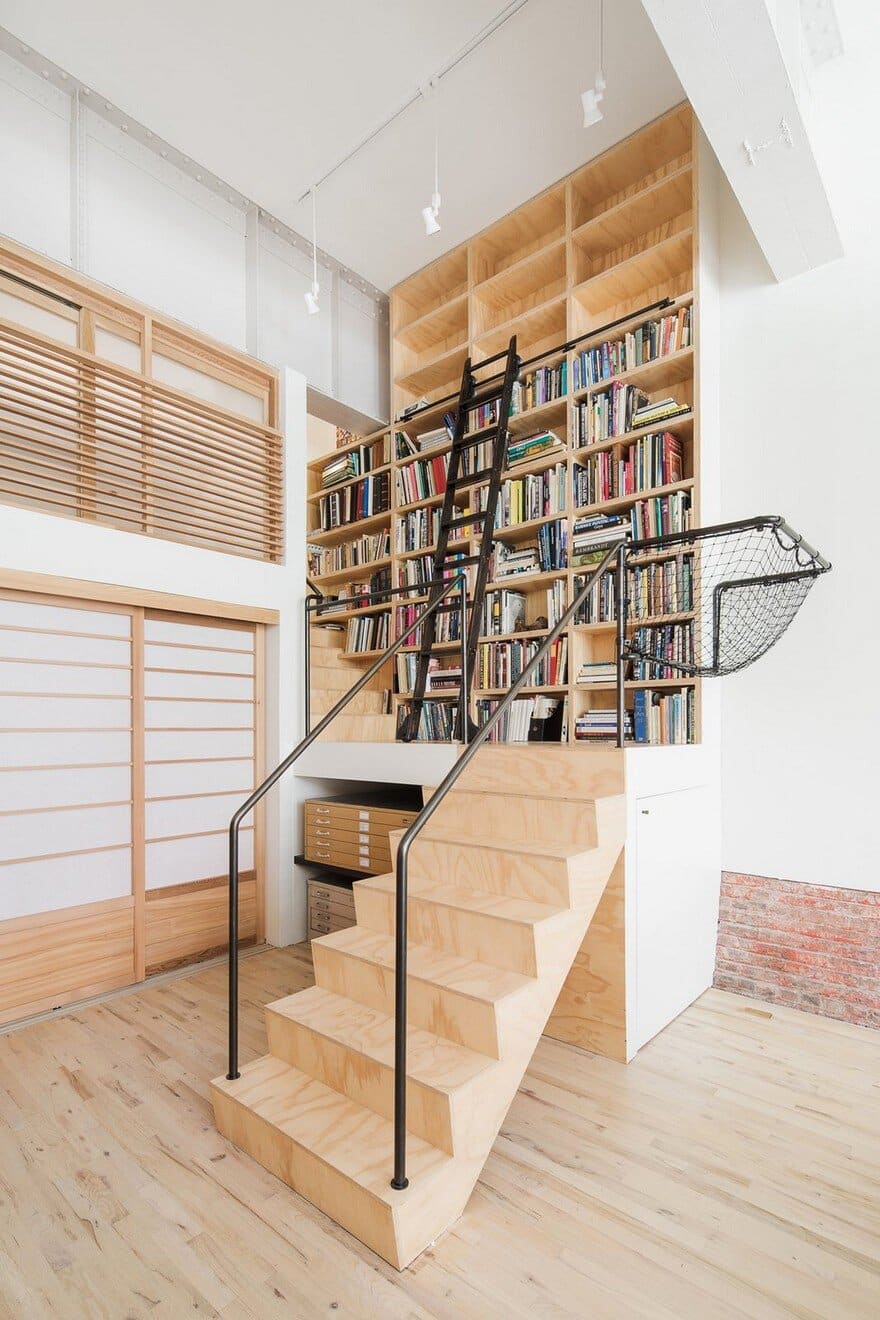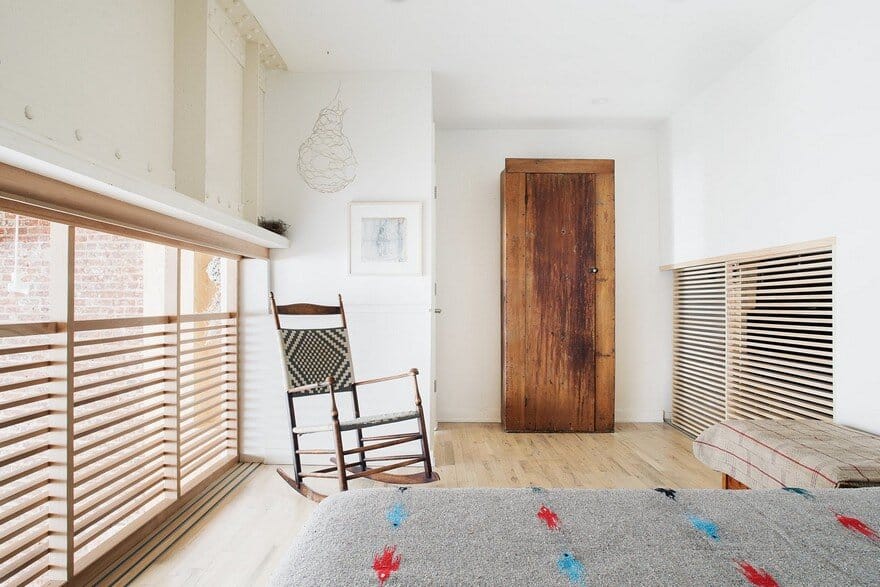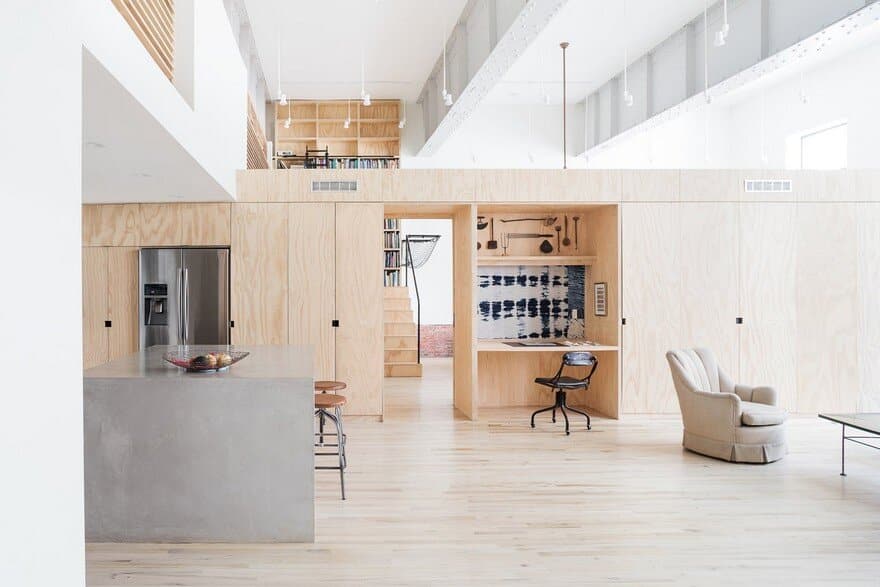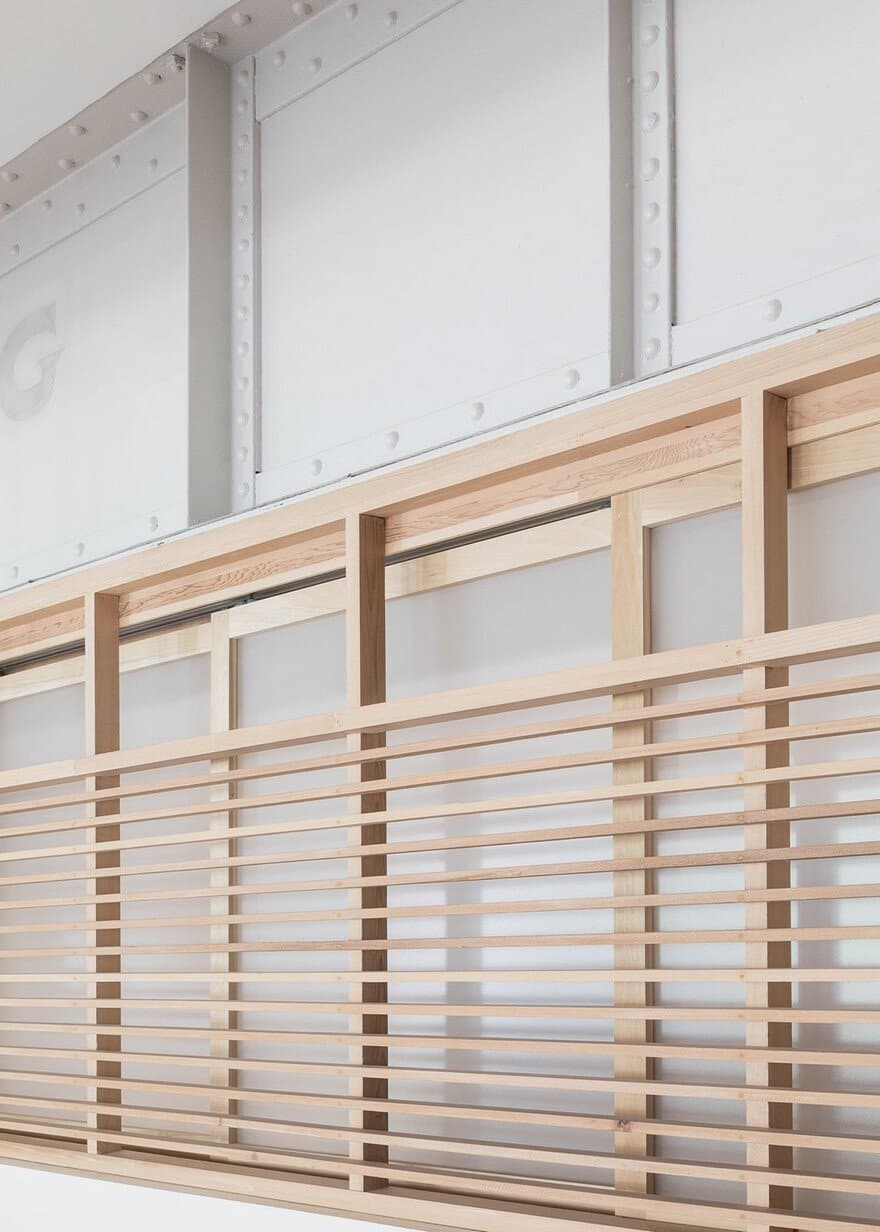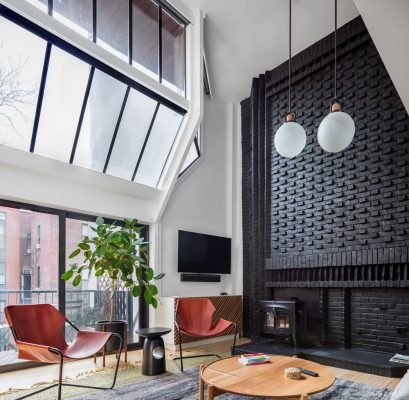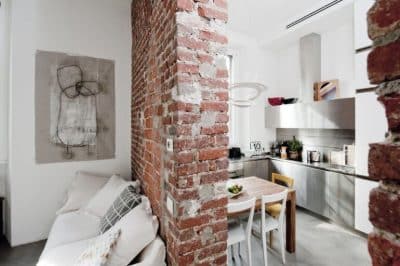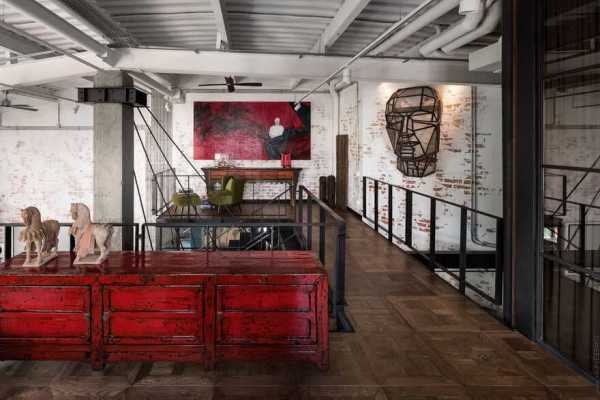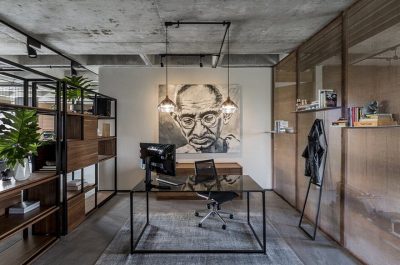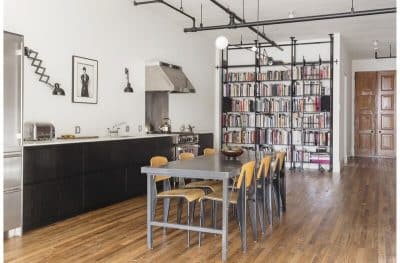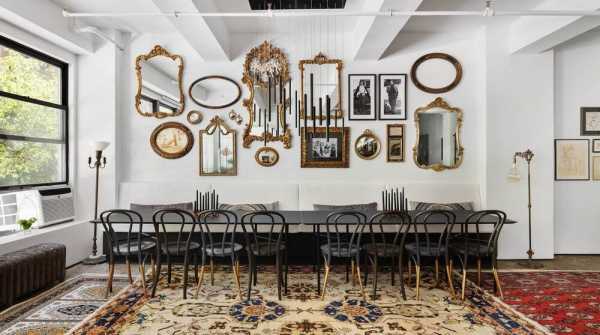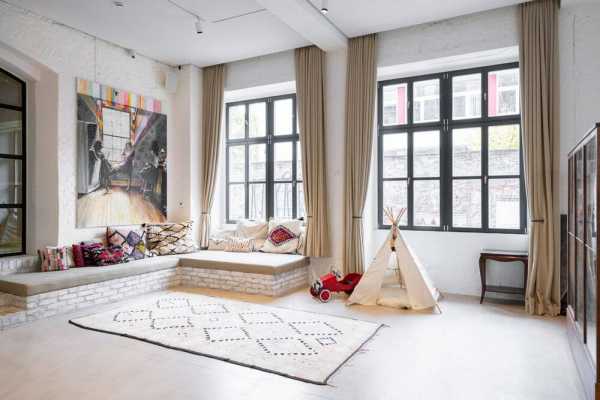Project: Wells Fargo Loft / live-work studio
Architects: Jeff Jordan Architects
Location: Jersey City, New Jersey, United States
Area: 2200 sq.ft
Photography: Gregory Maka
The Wells Fargo building, located in the Hamilton Park neighborhood in Jersey City, was built at the end of the 19th century as a stable for the company’s iconic stagecoach horses. Having long since functioned as a working carriage house, the building was renovated in the 1990’s and demised into several residential units. Our clients, who are working artists, had acquired the double-height ground level space hoping to transform it into a live-work studio.
Over the years our office has become accustomed to renovating older buildings in Jersey City, however, because of this particular space’s unusual size and readily apparent eccentricities (three exceptionally large riveted steel beams that ran across the full width of the space were one such peculiarity), we found ourselves in uncharted territory. However, seen from another point of view, the job at hand was rather straightforward: our task was simply to renovate a single room—albeit a very large one.
Of key importance was the means by which the space’s program would be partitioned. The client’s desire to integrate living and work areas required that, on the one hand, no hard delineation be made between the two while, on the other hand (for a host of practical reasons), some sort of boundaries were needed. Additionally, the unusually large space seem to require an outcome that expressed the substantial volume of the room. Our solution to this problem was to use screens, built-in cabinetry and shelving units to provide privacy without wholly enclosing each space apart from the others.
A simple, somewhat rustic material palette was used: existing brick walls were left exposed where possible; the steel beams that gave the space so much of its character were left unsheathed and given a fresh coat of paint; plywood was used extensively for all millwork, shelving and stairways; a light-colored hardwood floor was used to match the plywood; and everything else was painted white.
